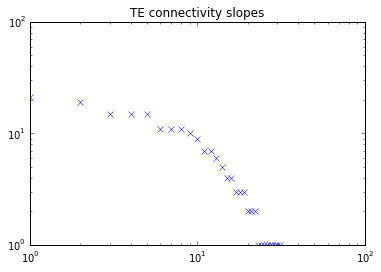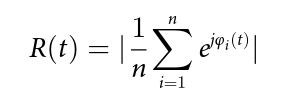This week we have been centered in developing new measures for C-PAC. The first one, Transfer Entropy, is related to the first measures we did (Entropy, Mutual Information) addind a lag-time to one of the series, while the second and the third ones have a frequency based approach based on phase synchronization analysys.
Transfer Entropy
The Transfer Entropy has been developed following our interest in measures which would compare past of the signals with his later values (like Granger Causality) and mixing with the Information Theory concept.
Transfer Entropy is a non-parametric statistic measuring the amount of directed (time-asymmetric) transfer of information between two random processes. Transfer entropy from a process X to another process Y is the amount of uncertainty reduced in future values of Y by knowing the past values of X given past values of Y and is denoted as:

1 2 3 4 5 6 7 8 9 10 11 12 13 14 15 16 17 18 19 20 21 22 23 | |
From this, we have built also a workflow that allows to calculate the TE values over a series of fMRI data. A first test has been carried out with real data using the same dataset of previous entries (a series of 28 subjects and a parcellation of 90 ROIs). Descriptively, mean values over subjects for the TE calculation was reported (left) and connectivity as unweighted was found by thresholding TE values with 0.7 (right).


Phase synchronization and PLV
As explained las week, we can obtain the analytical signals using the Hilbert transform. This analytic signal represents a signal in the time domain as a rotating vector with an instantaneous phase, phi(t), and amplitude.
The global level of phase synchrony is given by the parameter R(t), after calculating the modulus of the phase, taking values in the [0,1] range (being 0 completely asynchroneous and 1 completely synchronized, respectively):

Which, translated to python, is:
1 2 | |
For quantifying the pairwise phase relation between two given brain regions (timeseries) k and l, Phase-Locking Value (PLV) has to be calculated as:

Again, translated to python:
1 2 | |
Some examples with regard of phase synchronization measures will be shown in the next entry of the blog.